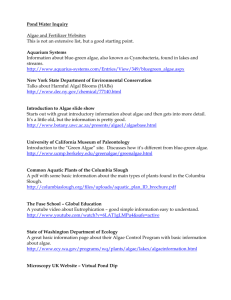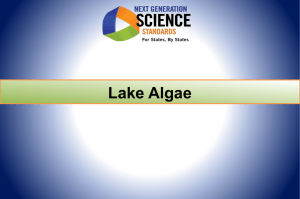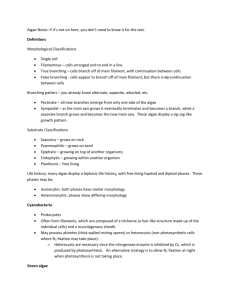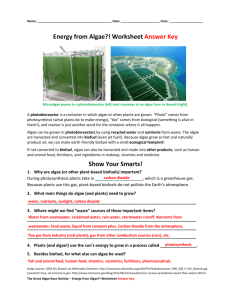Here
advertisement
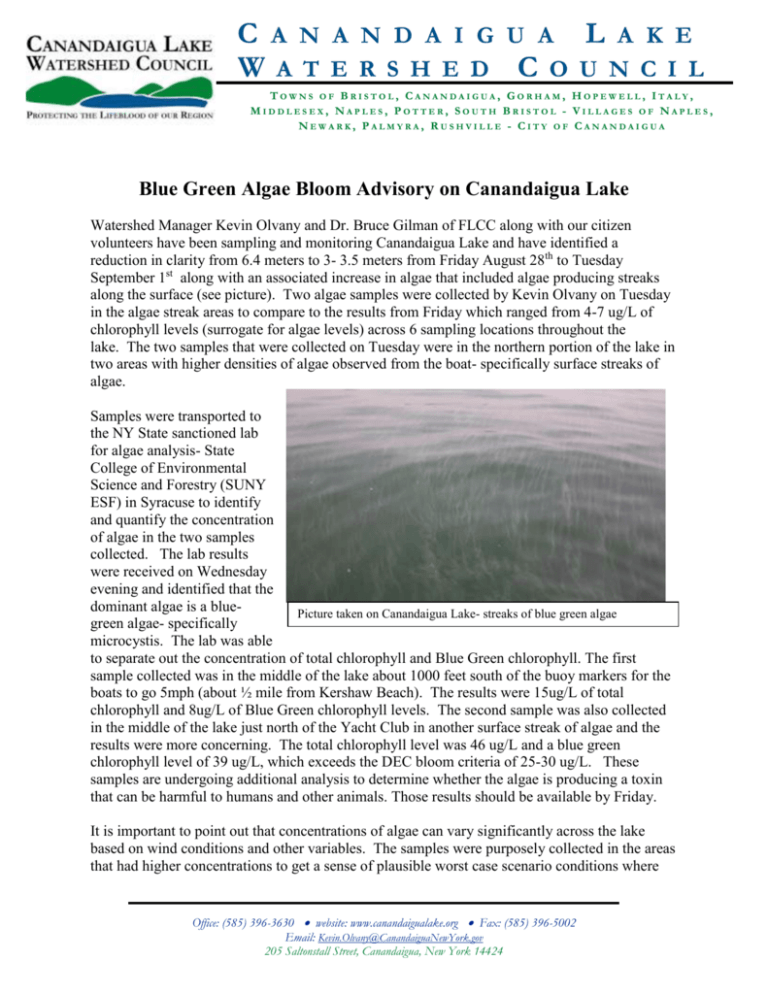
C A N WAT A N D A I G U A L A K E E R S H E D C O U N C I L TOWNS OF BRISTOL, CANANDAIGUA, GORHAM, HOPEWELL, ITALY, MIDDLESEX, NAPLES, POTTER, SOUTH BRISTOL - VILLAGES OF NAPLES, NEWARK, PALMYRA, RUSHVILLE - CITY OF CANANDAIGUA Blue Green Algae Bloom Advisory on Canandaigua Lake Watershed Manager Kevin Olvany and Dr. Bruce Gilman of FLCC along with our citizen volunteers have been sampling and monitoring Canandaigua Lake and have identified a reduction in clarity from 6.4 meters to 3- 3.5 meters from Friday August 28th to Tuesday September 1st along with an associated increase in algae that included algae producing streaks along the surface (see picture). Two algae samples were collected by Kevin Olvany on Tuesday in the algae streak areas to compare to the results from Friday which ranged from 4-7 ug/L of chlorophyll levels (surrogate for algae levels) across 6 sampling locations throughout the lake. The two samples that were collected on Tuesday were in the northern portion of the lake in two areas with higher densities of algae observed from the boat- specifically surface streaks of algae. Samples were transported to the NY State sanctioned lab for algae analysis- State College of Environmental Science and Forestry (SUNY ESF) in Syracuse to identify and quantify the concentration of algae in the two samples collected. The lab results were received on Wednesday evening and identified that the dominant algae is a bluePicture taken on Canandaigua Lake- streaks of blue green algae green algae- specifically microcystis. The lab was able to separate out the concentration of total chlorophyll and Blue Green chlorophyll. The first sample collected was in the middle of the lake about 1000 feet south of the buoy markers for the boats to go 5mph (about ½ mile from Kershaw Beach). The results were 15ug/L of total chlorophyll and 8ug/L of Blue Green chlorophyll levels. The second sample was also collected in the middle of the lake just north of the Yacht Club in another surface streak of algae and the results were more concerning. The total chlorophyll level was 46 ug/L and a blue green chlorophyll level of 39 ug/L, which exceeds the DEC bloom criteria of 25-30 ug/L. These samples are undergoing additional analysis to determine whether the algae is producing a toxin that can be harmful to humans and other animals. Those results should be available by Friday. It is important to point out that concentrations of algae can vary significantly across the lake based on wind conditions and other variables. The samples were purposely collected in the areas that had higher concentrations to get a sense of plausible worst case scenario conditions where Office: (585) 396-3630 website: www.canandaigualake.org Fax: (585) 396-5002 Email: Kevin.Olvany@CanandaiguaNewYork.gov 205 Saltonstall Street, Canandaigua, New York 14424 people would be in contact with the water. The Watershed Manager and Inspector made visual observations along both sides of the lakeshore today. The observations were showing that the southern half of the lake was much clearer than the northern half of the lake. The northeastern half of the lake seems to have the highest concentrations based on the prevailing southwesterly wind patterns. However, this can change rapidly. Additional samples were collected Wednesday along the east side of the lake based on higher concentrations visually observed. The Watershed groups are working closely with the DOH and DEC to document the algae levels and to determine if the algae is considered to be a harmful to humans and animals. The goal of this advisory is to notify the public along with asking for observations over the next couple of weeks. Please contact Watershed Manager Kevin Olvany’s cell phone- 585 747-8719 or by email: Kevin.Olvany@canandaiguanewyork.gov with any observations. Many lakes are dealing with this issue and they have concentrations much higher than our lake. However, the surface streaking and the high blue green concentrations are not a common occurrence on this lake and needs to be taken seriously. At the same time, there are large sections of Canandaigua Lake that are in good shape. It is recommended that you use caution and common sense when entering the water. Be on the lookout for larger concentrations of algae and avoid contact with water that has streaks of algae (see picture taken yesterday in the lake), water that has a surface scum, looks like pea soup or green paint. Blue green algae (Also known as cyanobacteria) are naturally occurring in lakes and ponds, though in certain conditions blooms can occur when algae multiply quickly in a short period of time - usually in warm, calm water. See this link for more information about Blue Green algae: http://www.dec.ny.gov/chemical/77118.html Here are some Guidelines from the DEC Regarding Blue-Green Algal Blooms: People, pets and livestock should avoid contact with water that is discolored or has scums on the surface. Colors can include shades of green, blue-green, yellow, brown or red. If contact does occur, wash with soap and water or rinse thoroughly with clean water to remove algae. Never drink untreated surface water, whether or not algae blooms are present. Untreated surface water may contain other bacteria, parasites or viruses, as well as algal toxins, that all could cause illness if consumed. Stop using the water and seek medical attention if needed if symptoms such as vomiting, nausea, diarrhea, skin, eye or throat irritation, allergic reactions or breathing difficulties occur while in contact with untreated surface waters. However, swimming, bathing or showering with water not visibly affected by a blue-green algae bloom is not expected to cause health effects. Because of their behavior, dogs are much more susceptible than humans to cyanobacterial poisoning. When toxins are present, dogs can be exposed to toxins by drinking the water, by eating washed up mats or scum of toxic cyanobacteria and by having skin contact with water. Dogs are often attracted to algal scum odors. After leaving the water, dogs can also be poisoned by grooming their fur and paws.




